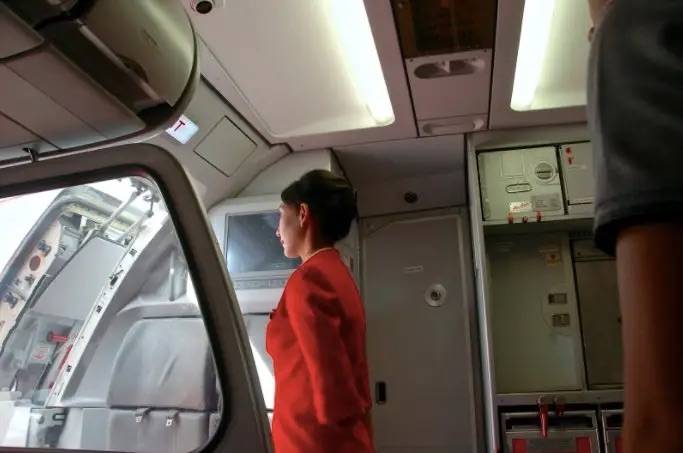PILOT DISCUSSES COCKPIT DOORS & SECURITY
In the post-9/11 world of commercial aviation, security is no doubt at the forefront of air travelers’ minds. From invasive body checks to restrictions on liquid carry ons and constant reminders about prohibited items, air travelers have come to accept security as an ever-present reality of airline flying. In addition, these security measures don’t end after passing the metal detectors.
Once aboard, Federal Air Marshals and reinforced cockpit doors serve as additional reminders of Uncle Sam’s dedication to necessary safeguards. However, not all commercial aircraft shut passengers off from the world of the pilots. On some smaller commuter aircraft, the cockpit door consists of nothing more than a curtain. Before you ask, the aircraft in question are not from half a century ago. Curtain-equipped commuters have continued to operate in the post-9/11 skies of American commercial aviation.
Not all commercial aircraft have secured cockpit doors
Why just a curtain? Well, one such aircraft, the British Aerospace Jetstream 32, is very small. Containing just 19 passenger seats, the Jetstream 32 is among the smallest of the puddle jumpers an air traveler is likely to come across. This aircraft’s small size makes the installation of a cockpit door a burdensome and unrealistic expectation. As such, the aircraft achieved certification with the curtain approved as an adequate divider between the cockpit and passenger cabin. While company Operation Specifications (OPS Specs) usually state that the curtain should remain closed for all “critical phases of flight,” pilots usually have the option to fly with the curtain open to facilitate passenger cabin supervision and communication. For these reasons, many Jetstream 32 crews fly with the curtain open. This open curtain policy allows passengers a glimpse into the cockpit operations that very few airline travelers get to see.
Flight insights: Capt Stephens describes a typical flight from takeoff to landing
Problems with the Curtain Door
With such an unrestricted boundary between the cockpit and passenger cabin, many of you are probably wondering what sort of problems pilots have with passengers coming up to the cockpit. Thankfully, such instances appear to be VERY rare and usually quite minor. In fact, during their preflight briefing, Jetstream crews even encourage passengers to let them know if the cabin temperature becomes uncomfortable or if any developments require crewmember attention (with just 19 seats, Jetstream 32s don’t require a flight attendant). On occasion, passengers tend to come forward and ask for a temperature adjustment. After such a request, most passengers promptly return to their seats, content to observe the crew fly the aircraft and manipulate the multitude of flight deck equipment.
For night flights, closing the curtain is a prudent choice, particularly during the descent and landing phases. The cabin lights, when reflected off the windscreen, can be distracting and sometimes temporarily blind the pilots. To deal with this, the best strategy is simply to close the curtain. In some instances, crewmembers opt to shut off the passengers’ reading lights using the overhead cockpit switch. These tactics prove useful to combat night glare and preserve night vision, but are usually unnecessary for daytime flights.
On a humorous note, passengers have been known to assist the flight crew with “inoperable engine” problems. You see, the Jetstream 32 is a turboprop aircraft. As such, passengers can tell when the engines are running by simply noting whether or not the propeller is turning. For lengthy taxis or the occasional ground delay, crews often taxi out with only one engine running, both to conserve fuel and reduce noise. When operating this way, a frantic passenger will invariably rush up to the cabin and ask, “Did you notice that engine’s not running?!”. As a rule of thumb, if more than one passenger informs the crew about the “engine problem,” they’ll make an announcement informing the whole cabin about the reason for the inoperable engine.
While news headlines occasionally scream of uncontrollable passengers and crazy crewmembers, the vast majority of air travelers are well-behaved and responsible individuals. While researching this post, not a single Jetstream 32 pilot reported having to deal with an unruly passenger. For certain aircraft, a curtain appears sufficient for security and permits passengers a view to the everyday operations of the flight crew.
READ MORE: Life as a Regional Airline Pilot
Find more help here for your journey through the airport

